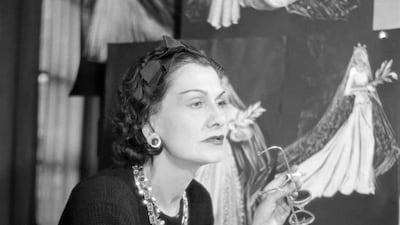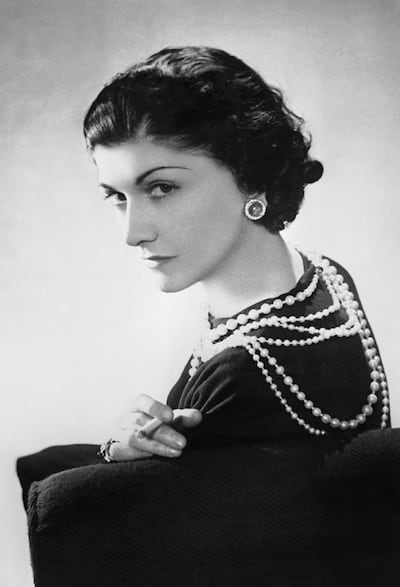Today marks the 48th anniversary of the death of one of fashion’s biggest names, Gabrielle "Coco" Chanel. But the legacy of her boxy tweed twin sets, quilted leather bags and ballerina pumps remains as strong as ever.
A designer is born
Born Gabrielle Bonheur Chanel in Saumur, France, in 1883, the famed designer would go on to reinvent the way women dress, liberating the body from restrictive corsets and embracing a more natural, fluid silhouette. She took the jet black crepe previously only worn by widows and transformed it into chic evening dresses. During her six-decade career, she dominated and democratised fashion through her avant-garde designs and personal philosophy on what constituted as style.
Forgoing diamonds and elaborate gems, she instead elevated costume jewellery to the very height of sophistication, looping layer upon layer around necks. She also turned the humble Breton striped sailor top into every woman’s go-to, teaming it with relaxed wide-legged trousers. In short, this diminutive woman breathed life into ideals that still resonate today.
The Chanel twinset
Despite having closed her maison and slipped into retirement in 1939, when Christian Dior debuted his wasp-waisted "New Look" in 1954, Chanel's fury at the restrictions being reimposed onto women's clothing caused her to reopen the house and, at 71, her reply was the box-cut tweed jacket and skirt. Today the Chanel twinset still signifies both style and comfort, and it is little wonder it has been adopted by the likes of Jackie Kennedy, the Duchess of Windsor, Princess Diana and Brigitte Macron.
An era of Karl Lagerfeld
When she died at the age of 88 in 1971, her passing threw the house of Chanel into a crisis. The solution came in 1983 with the appointment of Karl Lagerfeld as creative director. He brought stability and unity, and much like his predecessor, is famous for refusing to dwell on the past.
Choosing instead to focus on what is to come, his ready-to-wear collections are thoughtful and relevant, while for haute couture the sketches he hands over to his team are so detailed and complete they even contain precise instruction about buttons. Under his guidance, the house has earned a reputation for staging elaborate fashion shows, on vast carousels or replica icebergs, while for autumn/winter 2017, the brand launched a spaceship mid-show.
For cruise 2018, Lagerfeld recreated the Parthenon in central Paris, and for cruise 2019, he built a half-scale ocean liner, complete with smoking chimneys, and moored it in water inside a building. Guests were even invited aboard.
Collections have expanded to include some menswear (presented scattered through the womenswear), as well as into more esoteric items such as skis, snowboards and even a bicycle. Lagerfeld has managed to traverse the tricky path of retaining the brand's heritage, while determinedly keeping it updated and relevant – even introducing jeans, which would presumably have made his predecessor turn in her grave.
The resurgence of haute couture
Chanel has spearheaded the resurgence of haute couture, by buying up the specialist ateliers that create the embroidery, feathers and beadwork that typifies these precious creations, and making them available to competitors to ensure the survival of the industry. While it is the ready-to-wear collections that bring in the revenue, it is couture that is the beating heart of Chanel.
Dominating the globe
Building on the heritage of the world's most famous perfume, Chanel No 5 (a game-changer that Coco herself launched in 1921), Lagerfeld has introduced a number of new scents, including Chanel Coco in 1992. In 2012, he launched the Chanel Boy Bag, an update to the world-famous 2.55 bag (named for the date of its release, February 1955).
Today the brand is enlisting the likes of Kaia Gerber, Willow Smith, Kirsten Stewart and Cara Delevingne, to introduce the interlocking Cs to a whole new generation.
This constant quest for relevance resulted in a turnover of over $9.6bn (Dh35bn) in 2017, and Chanel is one of the very few global fashion brands that remains under private ownership.
So, while its formidable founder may have been gone for almost half a century, her spirit and style most definitely live on.
_________________________
Read more:
The jewellery trends you need to know about for 2019
Lebanese designer Rabih Kayrouz granted access to elite fashion club
Chanel bans pelts: are exotic skins the new fur?
__________________________


